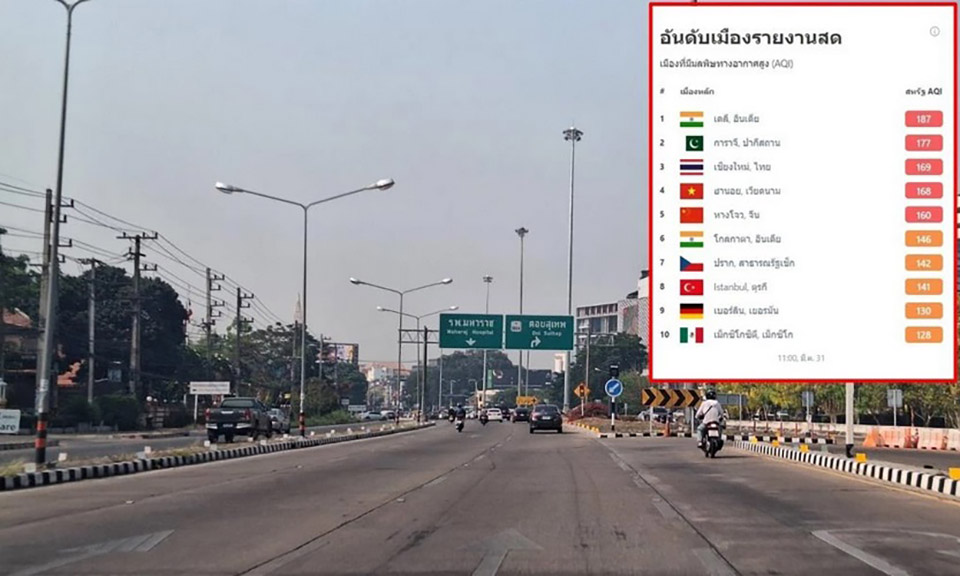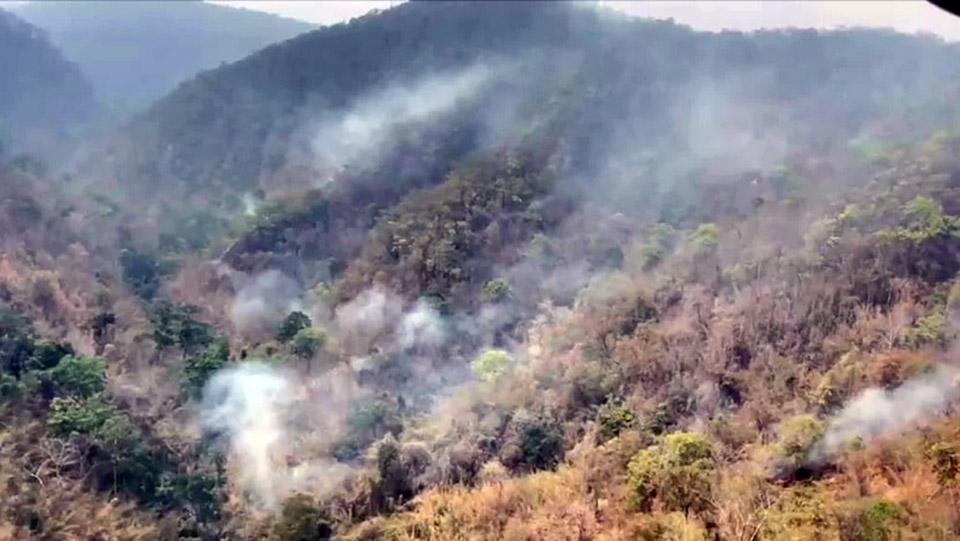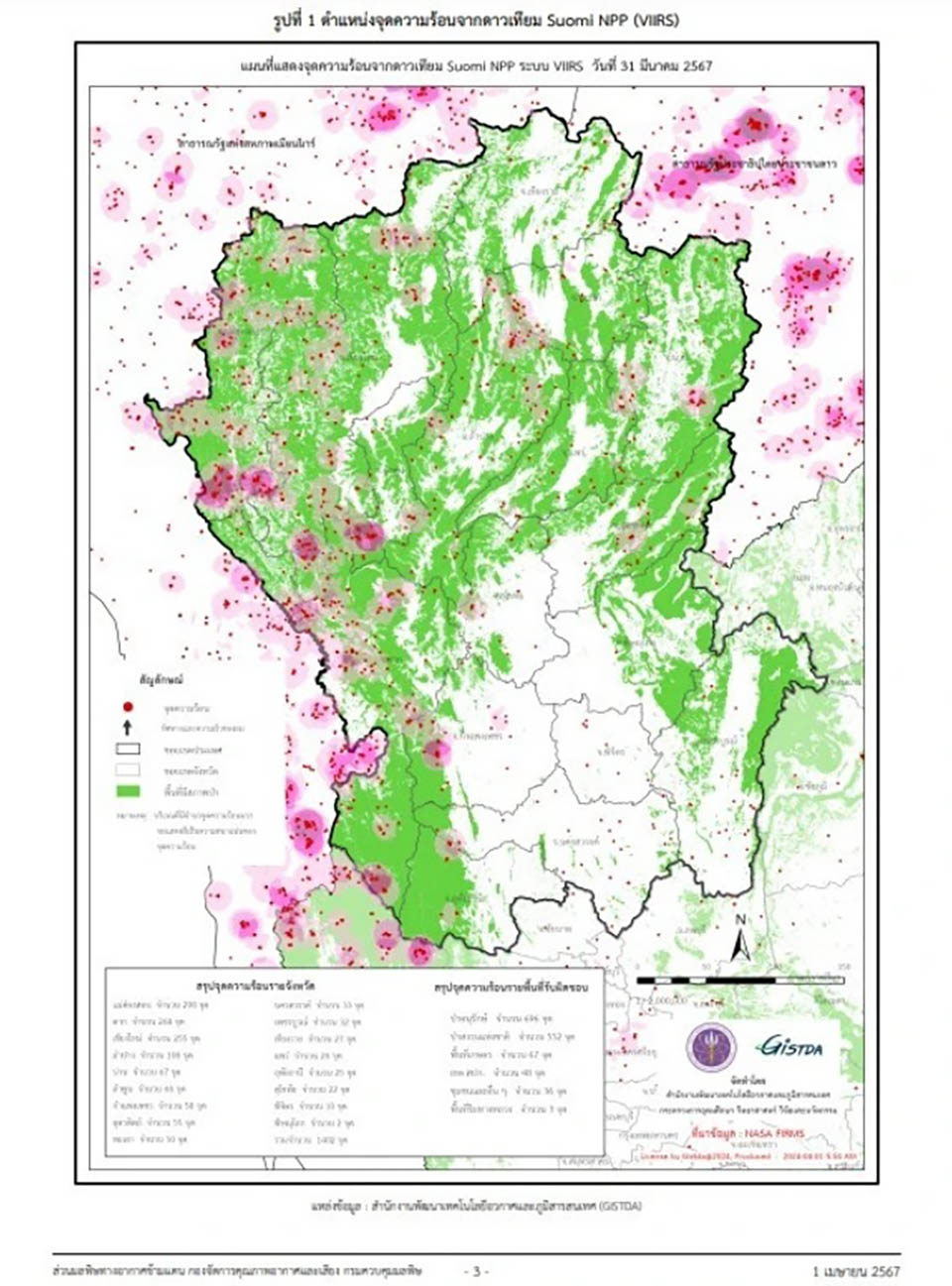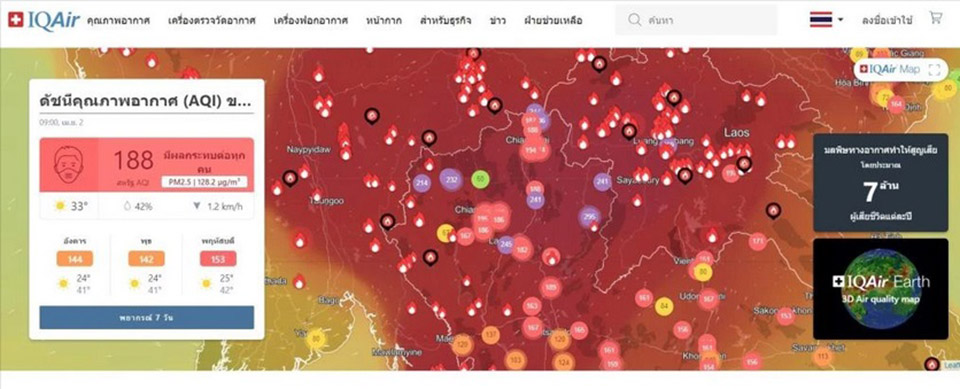
Chiang Mai is grappling with an ongoing crisis of continuous forest fires, shrouding the city in thick, suffocating smoke. The relentless blaze has pushed air pollution levels to the highest globally, surpassing health standards and posing significant risks.
Reports from Chiang Mai Province indicate that throughout Monday the city has been engulfed in dense smoke and haze due to relentless forest fires occurring both within the province and its vicinity. Data from the Geo-Informatics and Space Technology Development Agency (GISDA) reveals that within the past 24 hours as of March 31, there have been 1,402 hotspots detected across 17 northern provinces, with Chiang Mai recording 255 hotspots, ranking third after Mae Hong Son with 298 and Tak with 268. Lampang follows with 108 and Nan with 67.
Measurements of air quality conducted by pollution control stations in Chiang Mai at various locations including Chang Phueak Subdistrict, Sri Phum Subdistrict, Suthep Subdistrict in Mueang District, Chang Khoeng Subdistrict in Mae Chaem District, Mueang Na Subdistrict in Chiang Dao District, and Hang Dong Subdistrict in Hod District, indicate PM2.5 levels averaging 87.9, 93.8, 88.6, 69.8, 155.5, and 85.8 micrograms per cubic meter respectively, exceeding the standard limit of 37.5. Air Quality Index (AQI) readings stand at 213, 219, 214, 186, 281, and 211 respectively, far beyond the acceptable limit of 100, signifying hazardous health impacts.

On the website Iqair.com, which reports global air quality data and ranks cities with pollution worldwide, as of 4:00 PM on April 1, Chiang Mai’s air quality index is reported at 155 US AQI, with a PM2.5 measurement of 62.4 micrograms per cubic meter, surpassing standard limits and causing widespread health effects. This places Chiang Mai as the second most polluted city globally, with Hanoi, Vietnam ranking first with a US AQI of 168, and Sa Kaeo, Cambodia ranking third with a US AQI of 153.
Additionally, the Earthquake Monitoring Division of the Meteorological Department reports four earthquakes on April 1 with epicenters in Chiang Mai Province. The quakes occurred at 03:25 AM with a magnitude of 2.8 at a depth of 4 kilometers in Pa Phai Subdistrict, San Sai District; at 05:31 AM with a magnitude of 3.0 at a depth of 6 kilometers in Wiang Subdistrict, Phrao District; at 05:40 AM with a magnitude of 1.7 at a depth of 5 kilometers in Wiang Subdistrict, Phrao District; and at 06:01 AM with a magnitude of 1.5 at a depth of 3 kilometers in Pa Tum Subdistrict, Phrao District. There have been no reports of damages so far, with only the first two quakes being felt.










